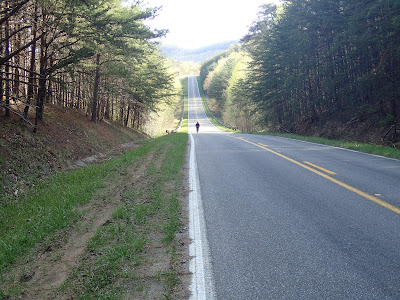Walkable Neighborhoods
What makes a neighborhood walkable?- A center: Walkable neighborhoods have a discernable center, whether it's a shopping district, a main street, or a public space.
- Density: The neighborhood is compact enough for local businesses to flourish and for public transportation to run frequently.
- Mixed income, mixed use: Housing is provided for everyone who works in the neighborhood: young and old, singles and families, rich and poor. Businesses and residences are located near each other.
- Parks and public space: There are plenty of public places to gather and play.
- Pedestrian-centric design: Buildings are placed close to the street to cater to foot traffic, with parking lots relegated to the back.
- Nearby schools and workplaces: Schools and workplaces are close enough that most residents can walk from their homes.
Streets Designed for Everyone
Complete Streets are roads are designed for everyone who uses them, including bicyclists, pedestrians of all ages and abilities, and people getting on and off transit vehicles. These streets are:
- Accessible: There are wheelchair ramps, plenty of benches with shade, sidewalks on all streets, etc.
- Well-connected: Streets form a connected grid that improves traffic by providing many routes to any destination.
- Built for the right speed: Lanes are narrow or traffic calming is in place to control speed.
- Comfortable: Pedestrian medians at intersections, count-down crosswalk timers, bicycle lanes, protected bus shelters, etc. make the street work better for those outside of a car.
This is the 4th day in a row I've had a good walk. Later after some car-bound errands I'm going to get on the bike. I hope it stays cool. I've had some issues dealing with the heat this summer. I got extremely hot on a ride not long ago, and the last 2 times I've played tennis (and not what I would call strenuous tennis) I've really withered. I keep waiting for another ticker episode like I had a week or so ago. I just wanna' be healthy.

3 comments:
Our location gets a 42 (and you called ME a suburbanite!). It's funny -- I mean, I guess you can get easily to a lot of places (and I do), though it's still a car-centered area. I have walked places before and am happy to be able to do so, but generally I have lots of errands to run and just combine them all into one evening or weekend trip.
I think your neighborhood is very nice and walkable. I think walkability is not just being able to get to a drugstore quickly -- it's also a sense of community, sidewalks, and pleasant streets, and your neiborhood has all of that.
--Laura
Drat, I made a typo on "neighborhood"...
--Laura
The LuvDogg sayeth...
I get like a 63. However, I take some exceptions with the website. The movie theater it lists for me is defunct. As is the coffee shop they list for me. Actually the closest bar/coffee shop is much closer and not listed. So I'm not sure I would get too bent out of shape if the matrix of businesses/amenites is bad.
That being said, grid neighborhoods are much better for traffic flow and for walkability. I would recommend looking at Kunstler's Geography of Nowhere or Jacob's The Death and Life of Great American Cities. But, hey, I sit in an ivory tower all day and don't walk.
Post a Comment